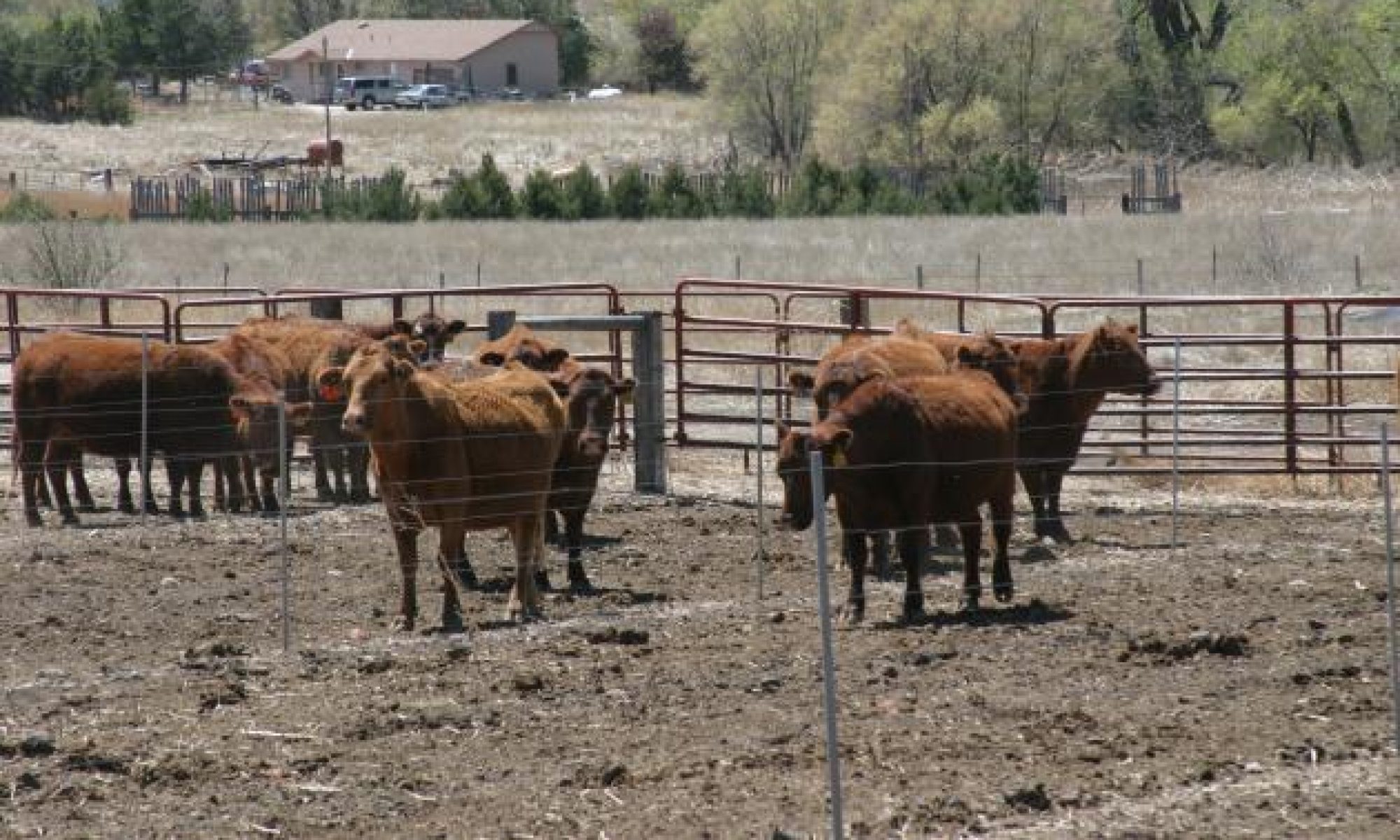The higher heating value of manure scraped from cattle feedyard surfaces depends primarily on its ash and moisture content. If the manure’s ash and water were completely removed with only the combustible fraction remaining as a residue, that (primarily organic) residue would have a higher heating value (HHV) of about 8,500 BTU per pound, as determined experimentally by Annamalai et al. (1987) and Rodriguez et al. (1998). That figure of 8,500 BTU/lb is known as a “dry, ash-free” (DAF) fuel value. To estimate the HHV of actual feedyard manure (i.e., in its “as-received” or “as-is” state), which always has some ash and some moisture in it, you can multiply the 8,500 BTU/lb figure by (1 – ash) and (1 – moisture). In this case, “ash” is the manure’s ash content expressed as a fraction (dry basis), and “moisture” is the manure’s moisture content as a fraction (wet basis). For example, a manure sample having 40% ash (dry basis) and 20% moisture (wet basis) would have an HHV of approximately: HHV(ash = 40%, moisture = 20%) = 8,500 BTU/lb x (1 – 0.40) x (1 – 0.20) = 8,500 x 0.6 x 0.8 = 4,080 BTU/lb Cattle manure (as excreted) has about 75% moisture and 15% ash, which translates to an HHV around 1,750 BTU/lb. On the feedyard surface, it generally dries out and may reach moisture contents as low as 15 to 20%. Depending on whether the corral surfaces are paved or native soil, the ash content may increase dramatically. HHV values between 2,000 and 5,000 BTU/lb are common, but they are highly variable because of moisture and ash dynamics of these outdoor facilities. Fuel value of manure generated in full confinement?under roof, on concrete?can be more tightly controlled.
Other cited literature:
Annamalai, K., J. M. Sweeten and S.C. Ramalingam. 1987. Estimation of gross heating values of biomass fuels. Transactions of the ASAE 30(4):1205-1208. Rodriguez, P.G., K. Annamalai, and J.M. Sweeten. 1988. The effect of drying on the heating value of biomass fuels. Transactions of the ASAE 41(4):1083-1087
